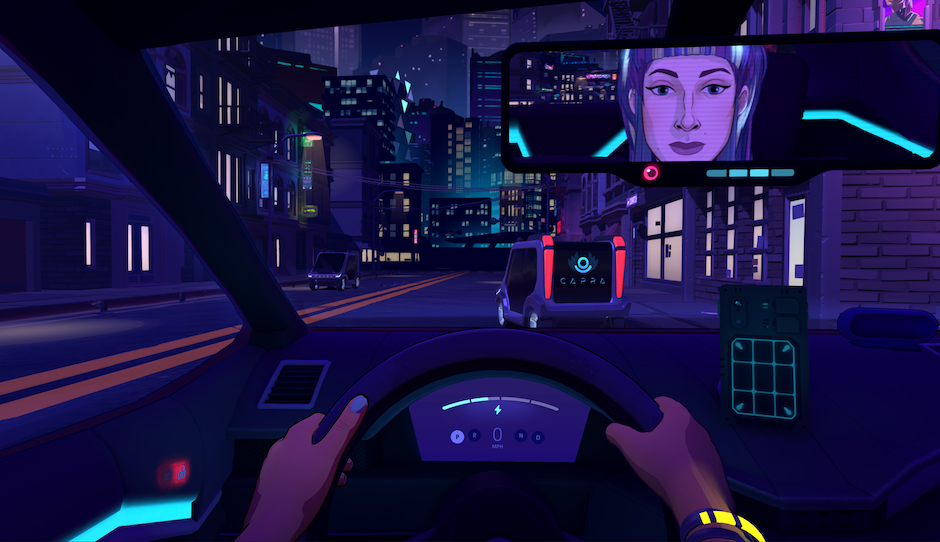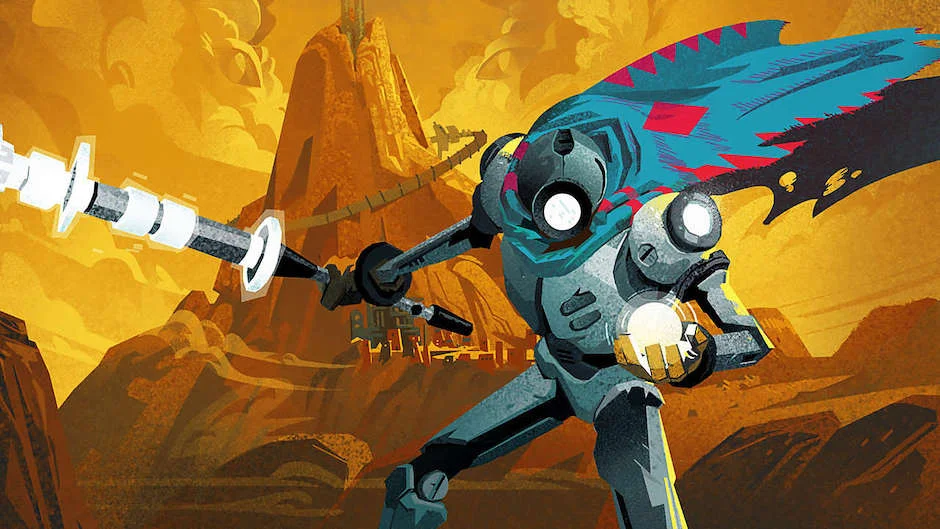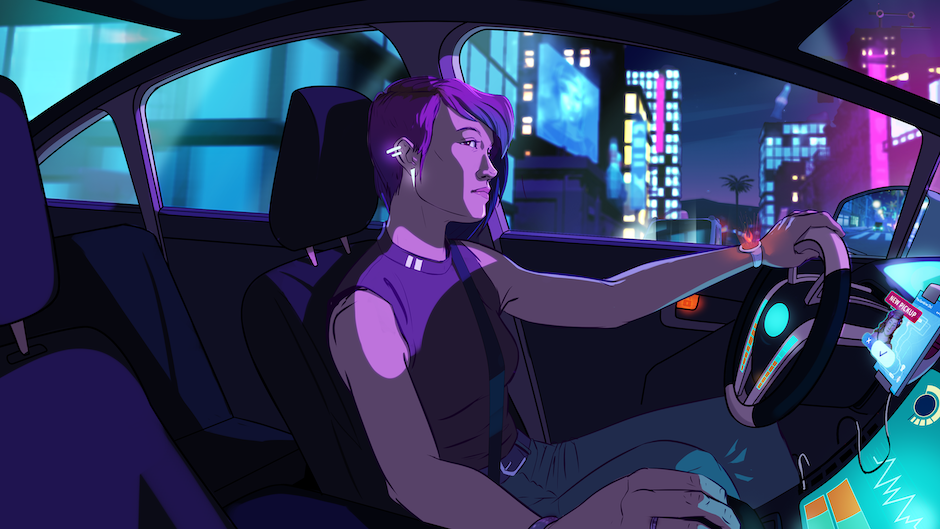Nintendo Switch code provided by Chance Agency
A futuristic narrative from Chance Agency, Neo Cab juggles emotions and honesty in a world overrun by automation. The indie game shares the experience of Lina, one of the last human drivers in the gig economy, and her interactions with passengers in Los Ojos. The job will force you to make decisions based on your emotional state and how you engage with the characters that enter your car will affect the outcome of the story. A central mystery involving Lina’s close friend also infuses the experience with tension and uncertainty. At its core, Neo Cab explores what it means to be human, even as the world around us complicates, and how a conversation is a bridge between people that normally might choose isolation over authentic encounters.
STORY
The narrative opens up on the outskirts of Los Ojos, presumably one of the biggest cities around and one in which Capra, a powerful and monopolistic corporation wields enormous influence and control. You play as Lina, the human driver for Neo Cab, a competitor with Capra, whose AI-driven cars dominate the streets. She is moving to Los Ojos and her friend Savy has offered her apartment as a place to stay. For Lina, her car and the rides that she accepts are her lifelines, so the game centers around the passengers she collects and their interactions. An overarching plot focuses on Savy, corporate corruption, and a dramatic friendship between the two women, but the more meaningful parts of the game actually involve the regular passengers, or pax, of Los Ojos and Lina’s connection with these unique individuals.
Neo Cab takes place over the course of six nights and during that time you will choose rides. Proximity on the map, the charge left on the car’s battery, or the passenger in question. All of these factors will influence who you pick up and who you leave to arrange other transportation. In the sci-fi city of Los Ojos, the passengers are everything. They reveal the nature of the world, the schisms that exist between people, and the enduring human qualities that persist despite automation.
The narrative thread with Savy is rather forgettable. Conflicted idealists fighting against authoritarian corporations. An oft-used concept and Neo Cab fails to breathe new life into it here. Which brings us back to Lina and her passengers. That’s where the game shines. Her “Feelgrid” emotional awareness wearable means that players will try to navigate conversations carefully. You can choose to warp Lina’s behavior to suit the passengers or you can rely on honesty by being faithful to Lina’s true self. It’s the more interesting part of the game. My only complaint is that the passengers frequently feel like character tropes more than fully-realized human beings. The insecure yet ardent radical. The quirky but brilliant mathematician. The egregious drunk. The duplicitous ex-con. Encountering those characters in a game that focuses on authentic connection is frustrating. I wished for more time and effort put into the development of the individuals that comprise the core of the gameplay.
GAMEPLAY
The mechanics of the game are simplistic. While at times I wanted a more involved gameplay experience, the barebones elements in Neo Cab serve to emphasize the story that’s evolving, frequently in Lina’s backseat. When picking up a passenger and driving them to their destination, the only controls are the dialogue choices that appear. Be careful to not lose focus, though, because the lack of voice acting means it’s very easy to miss something that someone said or to accidentally move through a dialogue prompt without realizing that you’ve done so. With no way to backtrack, that means you can lose the chance to make a decision in a game prioritizing just that. Voice acting or some haptic feedback to indicate progression through a conversation would have been an improvement on the gameplay. Outside of passenger rides, there is little else in Neo Cab regarding mechanics. Browsing the map to find your next fare or scrolling through Lina’s journal is all easily done through a smartphone interface.
The game is short. A few short sessions will wrap up the main narrative, so you can go back and try different narrative paths if you want to drive different passengers or change the decisions that you made the first time around. The curious denizens of Los Ojos would provide a more compelling reason to revisit Neo Cab than Savy and the main story, though. It works to bring Lina to Los Ojos, but it doesn’t command the same level of intrigue that the ordinary passengers do. There’s not a lot to focus on in regards to the gameplay because there’s not a lot there. It’s a narrative game, and Chance Agency focuses heavily on that aspect.
VISUALS
The graphics of Neo Cab were the most disappointing part of the game. The blues, purples, and neon colors associated with the sci-fi genre and depictions of a neo-futuristic world are present, but Los Ojos is very bland. What you see out the windows of the car never look like what the passengers are describing. Dull streets and the same design fail to create a sense of urban allure and futuristic growth that seems to be indicated in the dialogue. And the path of Lina’s car doesn’t always follow the directions given in the script. A particular turn might not be reflected in the visuals. It’s a lackluster visual experience that doesn’t convey the setting of Los Ojos well and it distracts from the story. It paled in comparison to the narrative.
REPLAYABILITY
There is a decent amount of replay value in Neo Cab. More passengers request rides in Los Ojos than you have time to accommodate, so playing through the game again will allow you to experience new people and conversations. The opening and closing of dialogue trees based on your emotional state mean that you can also react differently in each playthrough.
WHAT IT COULD HAVE DONE BETTER
Visually, Neo Cab falters. I couldn’t immerse myself in the experience because the setting didn’t quite match the themes and descriptions that surfaced during interactions with passengers. And a somewhat dull main story is overshadowed by the passengers that wind up in the back seat of Lina’s cab. More focus on plot and a stronger commitment to visual symmetry with the story would elevate the gameplay.
VERDICT
There are improvements needed, but an interesting setting with relevant themes work well together. Neo Cab is not the best narrative experience, but it’s worth your time for the examination of human connection and the exploration of how tech disrupts our lives.

























